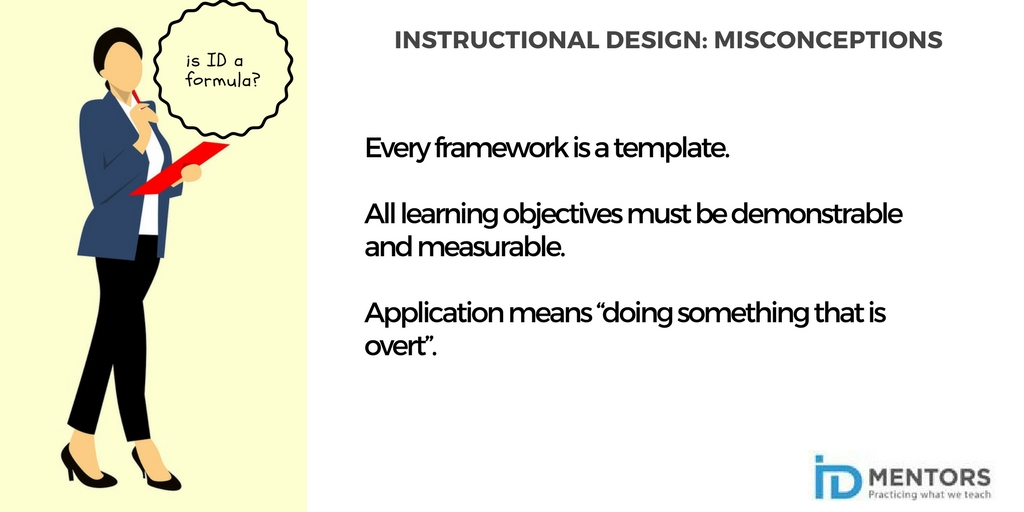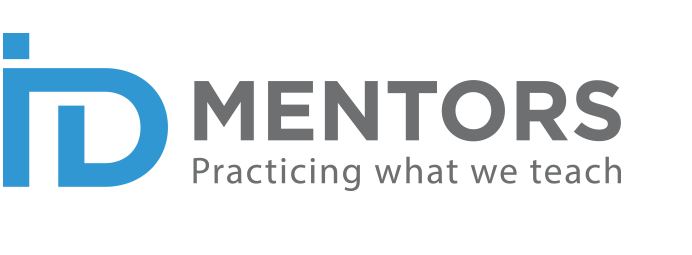
Frameworks – Instructional Design Tools?
The strength of instructional designers lies in their ability to simplify stuff. As a breed, we routinely make our tasks simple and procedural, be it Analysis, Design, Storyboarding, or Question creation. The checklists that are developed in most L & D departments and the number of authoring tools that exist for E-learning design and development only prove this point.
But some frameworks are just that – frameworks – they are not rules or templates. They are meant to help us understand complex and abstract concepts. Let me detail this point I am making with the help of three frameworks that are very commonly applied as rules/templates by instructional designers, and see why at times this approach does more harm than good.
- Writing objectives – Go with Bloom’s Taxonomy
- Scripting an e-module – Go with Gagne’s Events
- Workshop for Adults – Go with Kolb’s Experiential Model
Descriptive Frameworks versus Prescriptive Frameworks
Except for Gagne’s Events in this list, the other two are “descriptive” and not “prescriptive” frameworks.
Descriptive frameworks explain how things are, or how things work. On the other hand, prescriptive frameworks provide a template or a recommended procedure. For instance, Bloom’s Taxonomy is an attempt to structure the process of thinking from simple to complex – it describes how thinking is structured in human brains (how thinking works). In contrast, Gagne’s Events is more prescriptive in nature because it provides us with a structure for designing a unit of instruction.
Let’s take another example – something unrelated to instructional design. When we teach or learn about the solar system, the purpose is to understand the architecture of the system as it exists. In other words, you can only describe the solar system; you cannot use the “description” to perform a task.
When instructional designers try and interpret a descriptive framework as a prescriptive one, they come up with a set of rules/commandments that dilute the effectiveness of learning material. In the next section, I will address some misconceptions that routinely masquerade as ID commandments.
Popular Misconceptions
- Every framework is a template
So, Bloom’s taxonomy which is a descriptive framework and NOT a prescriptive one has a list of measurable verbs for each performance level. Stick to the list, and you will not err – that is the rule which is routinely taught and applied! By this logic, opening a Word document is pegged at Bloom Level three (application) because the objective is written using the word, perform – “Perform the steps to open a Word document”. It doesn’t matter that this task only involves a simple recall of steps.
Kolb’s model, again a descriptive framework becomes a template for designing workshop sessions. The four stages are interpreted to be sequential, and classroom activities are designed to reflect the four stages. Going back to our example of opening a Word document, if an instructional designer applies the Kolb’s model to teach it in a classroom, this will be the sequence of events:
- Concrete Experience: Open a Word Document
- Reflective Observation: How did you open the Word document?
- Abstract Conceptualization: There is more than one way, but one of these is the simplest and the common way to open a Word document
- Active Experimentation: Open a Word document in the workplace
Instructional designers must understand that Kolb’s model is not a template to be applied to a learning piece. It’s much more complex. It explains how cognitive processes work in adults, and how adult learning styles may influence these processes. Since the model also encompasses learning styles, a learner can start from any stage and not strictly from the concrete experience stage. When applying this framework it is important to confirm whether the content will benefit from reflection, interpretation and generalization. Learning how to open a Word document will stick if one performs the task repeatedly over a period of time. Repetition and practice are what matter here, and not reflection, interpretation and generalization.
- Every learning objective must be demonstrable and measurable
As you delve deeper into learning frameworks, such as Bloom’s Taxonomy or Kolb’s model, you are able to see the strengths as well as the shortcomings of these. This deep understanding helps you take valuable decisions when you design learning material. This sort of insight surely involves learning – a lot of changes take place in your schema – inside the brain. Will a chart of measurable and observable performance objectives help to capture this change? Definitely not, and moreover, a thinking instructional designer who uses the word “understand” to capture such learning will be told by a reviewer that the word “understand” is a no-no word for objectives!
- Application means “doing something that is overt” – so tasks that are covert but require complex cognitive processes are not application!
This one is the mother of all misconceptions. By this rule, every so-called software simulation to complete a procedure is “application”, even if it only involves a simple recall of steps to open MS Word, or switch on and switch off a computer!
While this may be easily applied as a rule to skill development or performance-oriented courses, such as nursing, learning to play a musical instrument, plumbing, machine maintenance etc., it cannot be applied in situations that do not require the performance of overt tasks. Think about this – what overt task can one perform in school by learning about, and understanding the solar system?
Here is another example. How does a learner come to realize that Merrill’s Content-Performance Matrix is a better framework for writing objectives than Bloom’s Taxonomy? This surely involves higher-order thinking and complex cognitive processes. This may be manifested in real life as a decision to choose one over the other, but the complex thought processes that are involved in making this decision cannot be visibly demonstrated.
In summary
Nothing in learning is cast in stone; hence imposing rules makes little sense. Rules discourage thinking, while guidelines encourage you to think before arriving at a decision – so that you make informed decisions. Understanding a framework as a set of guidelines or an explanation of how something works will help you come up with effective and meaningful learning interventions. On the other hand, converting these into rules and templates (with can and can’t) may serve you in standardizing learning but at what cost? Think about it.
2 responses on "Instructional Design: (Mis)Understanding Frameworks"
Leave a Message
You must be logged in to post a comment.



Nice article, very bold too, in the sense inspiring to move away from what has been conventional all this while…..
I agree with the point that in learning, nothing is set in stone. The Bloom’s taxonomy is a case in point here. It is a rather abused and highly misused learning framework.
As Instructional Designers, we are often told to treat a piece of content progressively: from simple to complex. While this makes sense, it is not altogether necessary that a learner must first learn and know about a lower order or simple task before moving to a higher order or complex task that is loosely related to it. Consider this: If a group of students was asked to draft a plan for sharing of the Cauvery river water between the states of Tamilnadu and Karnataka, would it be essential for them to first “understand” and “evaluate” the origin of the conflict? Wouldn’t a set of reference documents about the real issues suffice?
Is it really necessary to start from Knowledge and Comprehension if the objective is to evolve something new with a set of available resources/elements (Synthesis)?
Also, does starting every training material with the staid “At the end of this training, you will be able to…” lend more credibility to it as a “standard” training? To me, this kind of opening is a complete turn off! Given this age of tech savvy kids, I wouldn’t be surprised if even they commented, “How boring!”
Let’s get the user involved. Throw them challenges, excite them, intrigue them, but don’t turn them off at the outset!
Essentially, don’t overuse, abuse or misuse the learning guidelines and frameworks…least of all use them as rules or templates to strictly abide by!